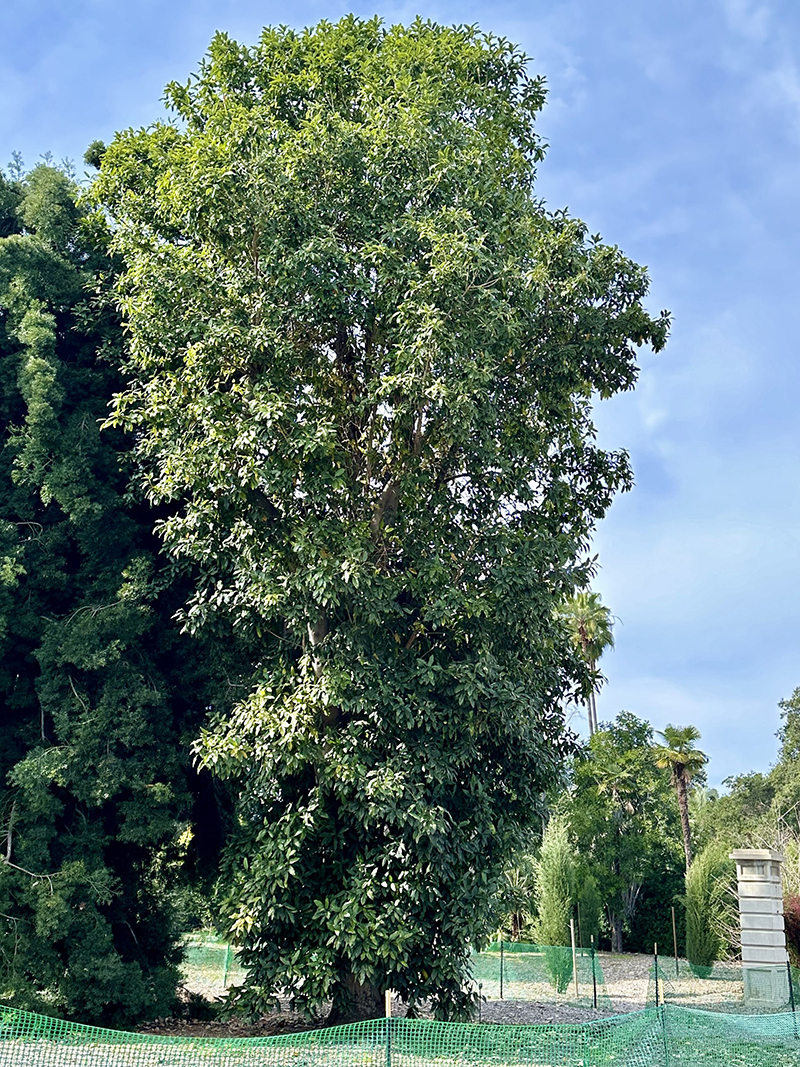
President’s Message: Realizing a Dream Fulfilled

The Huntington’s Magnolia pacifica tarahumara is the only mature specimen we know of in North America.
Since receiving the gift, Huntington staff has been working with a team of architects and engineers to study the 3-acre site and imagine what could be. One central consideration? The trees in that area. Our Botanical staff has been carefully investigating the best strategies to protect them and, importantly, how to integrate them properly into the site. One of those trees is a magnificent Magnolia pacifica tarahumara that is the only mature specimen we know of in North America (the plant is native to Mexico). Another particularly important tree is our dazzling cassia excelsa, a species native to Central and South America that’s proven nearly impossible to propagate—and our phenomenally talented staff has tried. Nearby are several historic oaks, including a rare Engelmann, one of my favorite trees—pictured here in The Real Dirt, a publication of the Garden Club of America. And just to the south of the site is our research grove of avocado, including one of our historic specimens that was planted during Henry E. Huntington’s time. In all, there are 150 trees that the project design and implementation will carefully accommodate. One might then wonder if this is the right site. In fact, The Huntington is home to many thousands of specimen trees, so we must always consider the trees’ well-being since every project is in close proximity to them. The Chinese Garden is a case in point: Each oak was well protected and cared for before, during, and after construction. Moreover, in addition to being an important feature in all our construction projects, our trees are critically important landscape elements, serving as habitats in their own right and providing much-needed shade, an essential cooling element.
In many ways, this is a story about sustainability. It is about the safekeeping of our trees during a construction project and ensuring that our Botanical staff has proper access for managing and studying the collection. But it’s also about the importance of sustaining a community. When a scholar is awarded a fellowship, they join a cohort of fellows that regularly come together as a group, listening and responding to one another’s projects, providing advice, and otherwise hatching and nurturing new friendships. Former fellows often talk about how their research projects changed dramatically because of comments and questions they received from other fellows, including those outside of their fields, and acknowledge the fruits of these conversations in their publications. And while The Huntington has always been a place for researchers to gather, our new Scholars Grove dramatically enhances the opportunities for friendships and productive exchanges. The social center of the project—the Wendy Munger Commons building—will include a communal kitchen, community room, media room, and meeting space for fellows and their families to come together. (Wendy is Charlie Munger’s daughter and a Huntington Trustee emerita.)
Once completed, in about two years’ time, Scholars Grove—long an unrealized dream—marks the achievement of a significant goal in our five-year strategic plan. It’s an absolutely thrilling moment for our research program, humanities scholarship, and The Huntington more generally.
Karen R. Lawrence, President